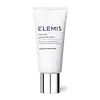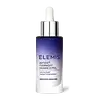What's inside
What's inside
 Key Ingredients
Key Ingredients

 Benefits
Benefits

 Concerns
Concerns

 Ingredients Side-by-side
Ingredients Side-by-side

Water
Skin ConditioningPropylene Glycol
HumectantOctyldodecanol
EmollientGlyceryl Stearate Se
EmulsifyingCetearyl Alcohol
EmollientGlycerin
HumectantC12-16 Alcohols
EmollientHelianthus Annuus Seed Oil
EmollientNiacinamide
SmoothingXanthan Gum
EmulsifyingPhenoxyethanol
PreservativePalmitic Acid
EmollientHydrogenated Lecithin
EmulsifyingParfum
MaskingPapain
Skin ConditioningChlorphenesin
AntimicrobialLactis Proteinum
Skin ConditioningAnanas Sativus Fruit Extract
Skin ConditioningSodium Dehydroacetate
PreservativeDisodium EDTA
Porphyridium Cruentum Extract
Skin ConditioningCinnamyl Alcohol
PerfumingFucus Vesiculosus Extract
EmollientCapsicum Annuum Fruit Extract
AntimicrobialTocopherol
AntioxidantCitronellol
PerfumingGeraniol
PerfumingLimonene
PerfumingCitral
PerfumingMentha Arvensis Leaf Oil
MaskingCuminum Cyminum Seed Oil
MaskingWater, Propylene Glycol, Octyldodecanol, Glyceryl Stearate Se, Cetearyl Alcohol, Glycerin, C12-16 Alcohols, Helianthus Annuus Seed Oil, Niacinamide, Xanthan Gum, Phenoxyethanol, Palmitic Acid, Hydrogenated Lecithin, Parfum, Papain, Chlorphenesin, Lactis Proteinum, Ananas Sativus Fruit Extract, Sodium Dehydroacetate, Disodium EDTA, Porphyridium Cruentum Extract, Cinnamyl Alcohol, Fucus Vesiculosus Extract, Capsicum Annuum Fruit Extract, Tocopherol, Citronellol, Geraniol, Limonene, Citral, Mentha Arvensis Leaf Oil, Cuminum Cyminum Seed Oil
Water
Skin ConditioningLactic Acid
BufferingHibiscus Sabdariffa Flower Extract
Skin ConditioningSodium Hydroxide
BufferingPolyacrylate Crosspolymer-6
Emulsion StabilisingPhenoxyethanol
PreservativeHydroxyethyl Acrylate/Sodium Acryloyldimethyl Taurate Copolymer
Emulsion StabilisingGlycerin
HumectantSqualane
EmollientHydrolyzed Jojoba Esters
Skin ConditioningParfum
MaskingPerilla Ocymoides Seed Oil
Skin ConditioningEchium Plantagineum Seed Oil
Skin ConditioningDisodium EDTA
Matthiola Longipetala Seed Oil
EmollientEthylhexylglycerin
Skin ConditioningMagnesium Hydroxide
AbsorbentBenzyl Benzoate
AntimicrobialYeast Extract
Skin ConditioningPolysorbate 60
EmulsifyingSorbitan Isostearate
EmulsifyingPropylene Glycol Dicaprylate/Dicaprate
EmollientLinalool
PerfumingLimonene
PerfumingT-Butyl Alcohol
PerfumingHexyl Cinnamal
PerfumingPotassium Sorbate
PreservativeSoy Amino Acids
Skin ConditioningXanthan Gum
EmulsifyingCananga Odorata Flower Oil
MaskingCitrus Aurantium Dulcis Peel Oil
MaskingMyristica Fragrans Kernel Oil
MaskingSodium Benzoate
MaskingHydrolyzed Yeast Protein
Skin ConditioningEugenol
PerfumingCoumarin
PerfumingCitrus Aurantium Amara Leaf/Twig Oil
MaskingCitrus Aurantium Amara Peel Oil
Skin ConditioningCoriandrum Sativum Fruit Oil
MaskingTocopherol
AntioxidantWater, Lactic Acid, Hibiscus Sabdariffa Flower Extract, Sodium Hydroxide, Polyacrylate Crosspolymer-6, Phenoxyethanol, Hydroxyethyl Acrylate/Sodium Acryloyldimethyl Taurate Copolymer, Glycerin, Squalane, Hydrolyzed Jojoba Esters, Parfum, Perilla Ocymoides Seed Oil, Echium Plantagineum Seed Oil, Disodium EDTA, Matthiola Longipetala Seed Oil, Ethylhexylglycerin, Magnesium Hydroxide, Benzyl Benzoate, Yeast Extract, Polysorbate 60, Sorbitan Isostearate, Propylene Glycol Dicaprylate/Dicaprate, Linalool, Limonene, T-Butyl Alcohol, Hexyl Cinnamal, Potassium Sorbate, Soy Amino Acids, Xanthan Gum, Cananga Odorata Flower Oil, Citrus Aurantium Dulcis Peel Oil, Myristica Fragrans Kernel Oil, Sodium Benzoate, Hydrolyzed Yeast Protein, Eugenol, Coumarin, Citrus Aurantium Amara Leaf/Twig Oil, Citrus Aurantium Amara Peel Oil, Coriandrum Sativum Fruit Oil, Tocopherol
Ingredients Explained
These ingredients are found in both products.
Ingredients higher up in an ingredient list are typically present in a larger amount.
Disodium EDTA plays a role in making products more stable by aiding other preservatives.
It is a chelating agent, meaning it neutralizes metal ions that may be found in a product.
Disodium EDTA is a salt of edetic acid and is found to be safe in cosmetic ingredients.
Learn more about Disodium EDTAGlycerin is already naturally found in your skin. It helps moisturize and protect your skin.
A study from 2016 found glycerin to be more effective as a humectant than AHAs and hyaluronic acid.
As a humectant, it helps the skin stay hydrated by pulling moisture to your skin. The low molecular weight of glycerin allows it to pull moisture into the deeper layers of your skin.
Hydrated skin improves your skin barrier; Your skin barrier helps protect against irritants and bacteria.
Glycerin has also been found to have antimicrobial and antiviral properties. Due to these properties, glycerin is often used in wound and burn treatments.
In cosmetics, glycerin is usually derived from plants such as soybean or palm. However, it can also be sourced from animals, such as tallow or animal fat.
This ingredient is organic, colorless, odorless, and non-toxic.
Glycerin is the name for this ingredient in American English. British English uses Glycerol/Glycerine.
Learn more about GlycerinLimonene is a fragrance that adds scent and taste to a formulation.
It's found in the peel oil of citrus fruits and other plants such as lavender and eucalyptus. The scent of limonene is generally described as "sweet citrus".
Limonene acts as an antioxidant, meaning it helps neutralize free radicals.
When exposed to air, oxidized limonene may sensitize the skin. Because of this, limonene is often avoided by people with sensitive skin.
The term 'fragrance' is not regulated in many countries. In many cases, it is up to the brand to define this term. For instance, many brands choose to label themselves as "fragrance-free" because they are not using synthetic fragrances. However, their products may still contain ingredients such as essential oils that are considered a fragrance.
Learn more about LimoneneParfum is a catch-all term for an ingredient or more that is used to give a scent to products.
Also called "fragrance", this ingredient can be a blend of hundreds of chemicals or plant oils. This means every product with "fragrance" or "parfum" in the ingredients list is a different mixture.
For instance, Habanolide is a proprietary trade name for a specific aroma chemical. When used as a fragrance ingredient in cosmetics, most aroma chemicals fall under the broad labeling category of “FRAGRANCE” or “PARFUM” according to EU and US regulations.
The term 'parfum' or 'fragrance' is not regulated in many countries. In many cases, it is up to the brand to define this term.
For instance, many brands choose to label themselves as "fragrance-free" because they are not using synthetic fragrances. However, their products may still contain ingredients such as essential oils that are considered a fragrance by INCI standards.
One example is Calendula flower extract. Calendula is an essential oil that still imparts a scent or 'fragrance'.
Depending on the blend, the ingredients in the mixture can cause allergies and sensitivities on the skin. Some ingredients that are known EU allergens include linalool and citronellol.
Parfum can also be used to mask or cover an unpleasant scent.
The bottom line is: not all fragrances/parfum/ingredients are created equally. If you are worried about fragrances, we recommend taking a closer look at an ingredient. And of course, we always recommend speaking with a professional.
Learn more about ParfumPhenoxyethanol is a preservative that has germicide, antimicrobial, and aromatic properties. Studies show that phenoxyethanol can prevent microbial growth. By itself, it has a scent that is similar to that of a rose.
It's often used in formulations along with Caprylyl Glycol to preserve the shelf life of products.
Tocopherol (also known as Vitamin E) is a common antioxidant used to help protect the skin from free-radicals and strengthen the skin barrier. It's also fat soluble - this means our skin is great at absorbing it.
Vitamin E also helps keep your natural skin lipids healthy. Your lipid skin barrier naturally consists of lipids, ceramides, and fatty acids. Vitamin E offers extra protection for your skin’s lipid barrier, keeping your skin healthy and nourished.
Another benefit is a bit of UV protection. Vitamin E helps reduce the damage caused by UVB rays. (It should not replace your sunscreen). Combining it with Vitamin C can decrease sunburned cells and hyperpigmentation after UV exposure.
You might have noticed Vitamin E + C often paired together. This is because it is great at stabilizing Vitamin C. Using the two together helps increase the effectiveness of both ingredients.
There are often claims that Vitamin E can reduce/prevent scarring, but these claims haven't been confirmed by scientific research.
Learn more about TocopherolWater. It's the most common cosmetic ingredient of all. You'll usually see it at the top of ingredient lists, meaning that it makes up the largest part of the product.
So why is it so popular? Water most often acts as a solvent - this means that it helps dissolve other ingredients into the formulation.
You'll also recognize water as that liquid we all need to stay alive. If you see this, drink a glass of water. Stay hydrated!
Learn more about WaterXanthan gum is used as a stabilizer and thickener within cosmetic products. It helps give products a sticky, thick feeling - preventing them from being too runny.
On the technical side of things, xanthan gum is a polysaccharide - a combination consisting of multiple sugar molecules bonded together.
Xanthan gum is a pretty common and great ingredient. It is a natural, non-toxic, non-irritating ingredient that is also commonly used in food products.
Learn more about Xanthan Gum